460 Rowland vs 10mm: A 7 Parameter-Based Comparative Analysis!

Are you facing a dilemma when it comes to selecting between the 460 Rowland and the 10mm? Worry not, I am here to help you choose the right cartridge.
The 10mm is renowned for its accuracy and power. On the other hand, you have the 460 Rowland with full power loads bringing a lot of versatility to the table. Which is the better overall? This is what we will try to break down today.
Read on to learn about the differences in trajectory, long-range shooting capabilities, loading types, projectile weight, recoil characteristics, and ballistics. All of these aspects will help you in choosing the winner. Let’s dive into the details!

460 Rowland vs 10mm: A Quick Review
Both the 460 Rowland and 10mm are popular rounds that are used in different weapon system. So it is necessary to take an in-depth look into them. Let’s have a quick look at the two cartridges:
460 Rowland
The 460 Rowland gun cartridge was developed by Johnny Rowland in 1997. It was intended to deliver a substantial boost in energy over existing pistol cartridges. Some key things about this round are:
- Its design is based on the .45 ACP, but it has been elongated and necked down to accommodate .451 caliber bullets.
- The bullet weight is also varied so it caters to a lot of different shooting scenarios.
- The factory ammo is really powerful so you get significant recoil.
- You can use this round in semi-auto pistols by using a conversion kit. This is mostly for the guns that shoot .45 ACP.
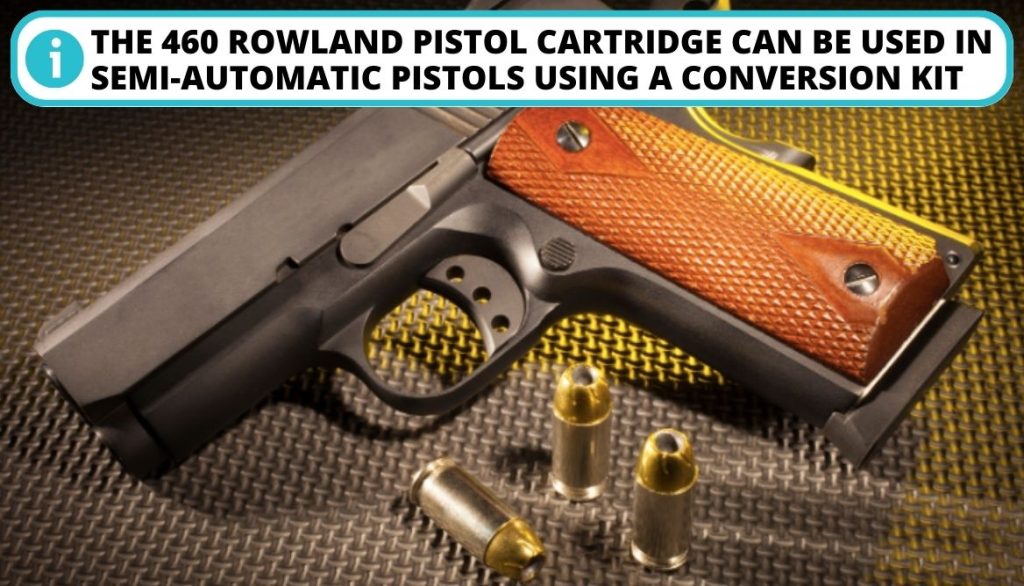
10mm
The 10mm gun cartridge emerged in the early 1980s, originally developed by Jeff Cooper and brought to fruition by Norma. Here are some of the facts about the 10mm:
- Its creation aimed to bridge the gap between the power of a .45 ACP and the magazine capacity of 9mm.
- The 10mm’s adaptability allows it to be used in various shooting disciplines, from self-defense to hunting.
- Its widespread availability in both semi-automatic guns and some revolvers ensures shooters have a diverse selection of firearms to meet their specific needs.
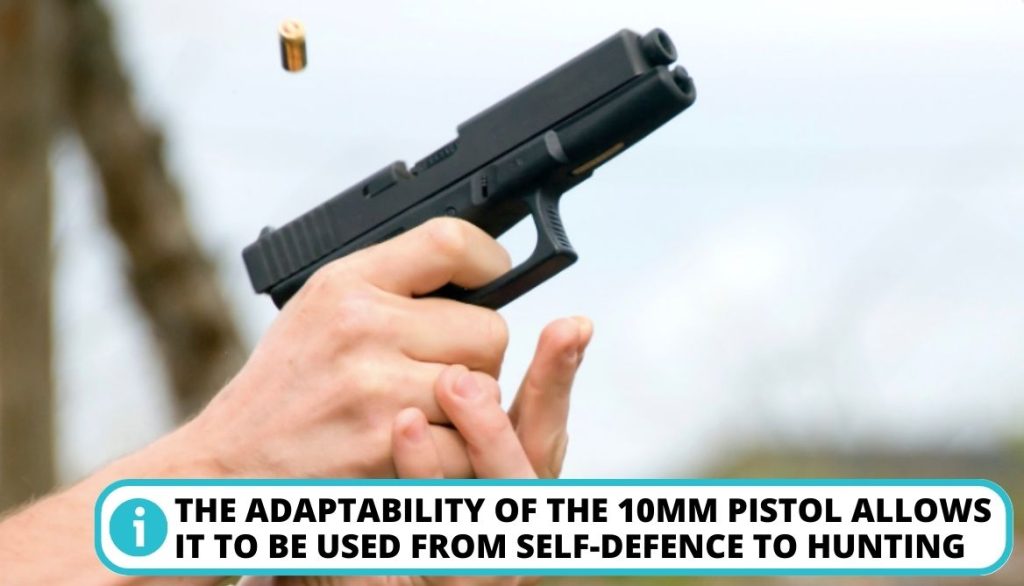
Comparison Chart: 460 Rowland vs 10mm
Let’s take a quick look at how these both rounds stand against each other:
Parameters | 460 Rowland | 10mm |
Bullet Size: | .451 inches | .401 inches |
Bullet Diameter: | .451 inches | .4005 inches |
Shell Case Length: | .957 inches | 0.992 inches |
Bullet Weight Grain: | 185 gr | 155 gr |
Energy (per 200 yards): | 483 ft-lbs | 300 ft-lbs |
Velocity (per 200 yards): | 972.6 ft/s | 934 ft/s |
Muzzle Energy: | 954 ft-lbs | 684 ft-lbs |
Muzzle Velocity: | 1524 ft/s | 1410 ft/s |
460 Rowland: Benefits & Drawbacks
Here are the good and bad of the 460 Rowland:
- A powerful round with more energy and allows better penetration through thick surfaces.
- Higher velocity reduces the likelihood of deflection by wind or obstacles.
- Versatile usage in various firearms, including revolvers and semi-automatic pistols.
- The bullet weight is substantial when compared to a 10mm so you get increased power.
- More energy increases the risk of serious injury when fired from incompatible handguns.
- It will cost you more money than other rounds in the market.
10mm: Benefits & Drawbacks
Here are the good and bad of the 10mm:
- Widely available and more affordable compared to other options.
- Exhibits a flatter trajectory for enhanced shooting precision.
- Easy to convert and adapt for various purposes.
- Offers higher round capacity, providing more shots before reloading.
- It is not a very powerful round like a 460 Rowland.
460 Rowland vs 10mm: A 6 Parameter In-Depth Comparison
Both the 460 Rowland and the 10mm are excellent cartridges with their own strengths. But if we examine specific parameters, some distinctions become apparent.
Let’s take a detailed look at how these rounds compare in various aspects:
1. Trajectory
The 10mm outperforms the 460 Rowland in terms of sectional density. It results in a flatter trajectory. At 50 yards, the average bullet drop for the 10mm is 1.12 inches and it increases to 4.06 inches at 100 yards. So, it handily surpasses its competitor.
The 460 ammunition is both heavier and longer than the 10mm. You don’t get a flatter trajectory as there is a faster bullet drop. Therefore, you need a lot more practice.
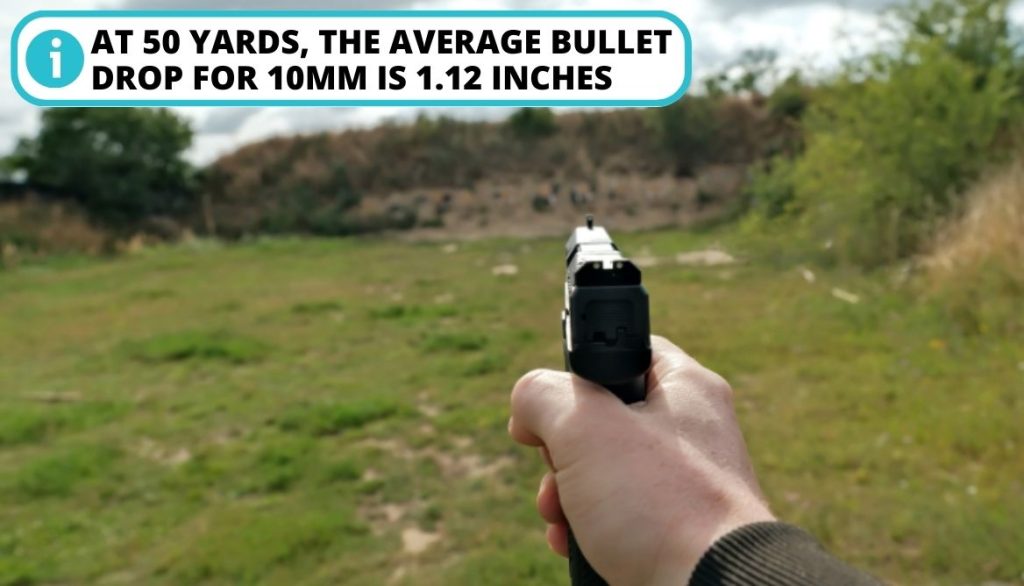
Winner: In this category, due to its flatter trajectory, the 10mm is a superior choice. You won’t have to compensate for the fall as much as the 460 Rowland.
2. Long Distance Shooting
Both cartridges shoot accurately and therefore can be used for hunting. These are good at hunting down two-legged predators. But, keep in mind that these are primarily designed for pistols and handguns. So, these aren’t the best when it comes to long-distance shooting.
But, if you want to shoot over a long distance, the 10mm takes the lead with its superior sectional density and flatter trajectory. It outperforms the 460 Rowland in this aspect.
The 460 Rowland requires a compensator to manage its recoil due to the increased power. The high recoil makes it harder to hit targets that are far away. This factor further solidifies the 10mm’s advantage over it.
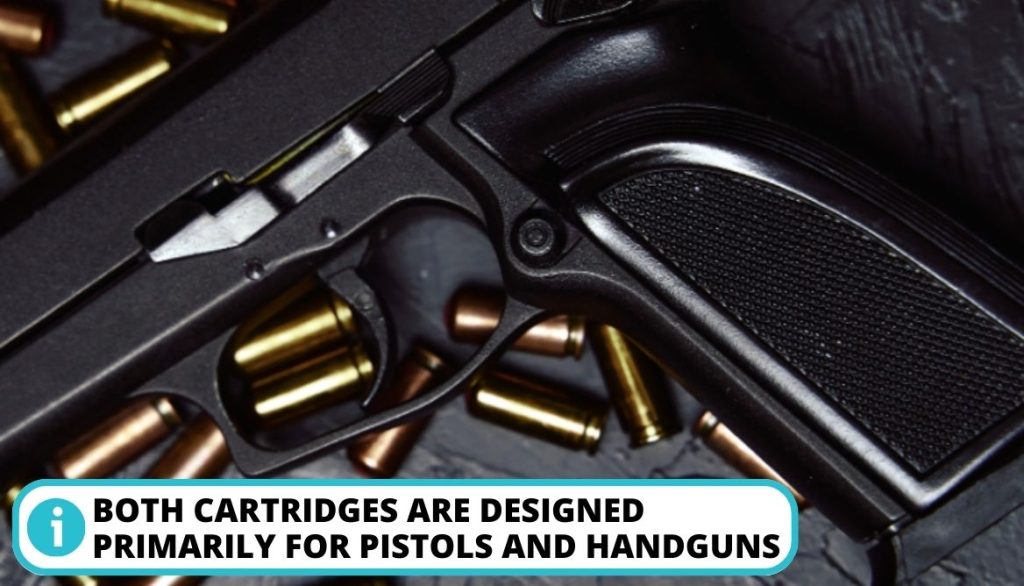
Winner: Once again, the 10mm shines due to its better density and flat trajectory. It makes it the better choice for long-range shooting.
3. Loading Type
The 460 Rowland and 10mm cartridges offer a notable difference inloading typechoices.
- The 460 Rowland bullets range from 80 gr to 260 gr.
- You would find rounds of 10mm spanning from 175 gr to 230 gr.
The Rowland proves to be more potent, boasting higher muzzle velocity and greater bullet energy compared to the 10mm. This increased power provides the 460 Rowland with an advantage over the 10mm. It even takes down a black bear up close.
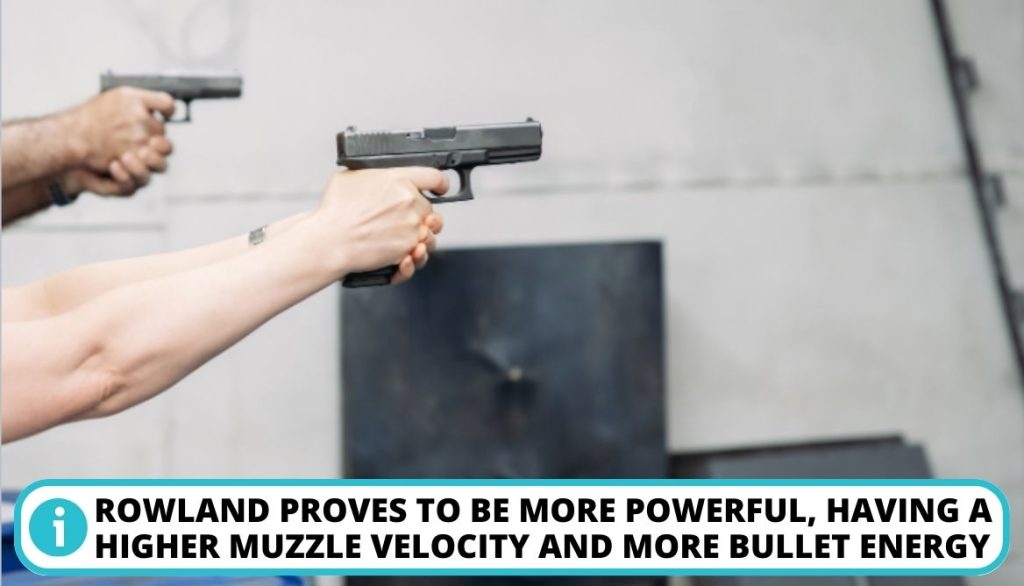
Winner: In the loading type, the 460 Rowland reigns supreme over the 10mm with high muzzle velocity and more power.
4. Recoil
When comparing recoil between the two cartridges, the 10mm comes out as the more shooter-friendly option. While the 460 Rowland does a pretty nice job, it is advisable to use a compensator to manage the recoil effectively.
The 10mm does not require any additional tools like a compensator to achieve reduced recoil. So, it offers easier and more comfortable shooting without any modifications.

Winner: The 10mm rounds are much more suitable for people who don’t want to deal with high recoil. So, it is the better round in terms of recoil.
5. Bullet Weight
The 460 Rowland offers versatility to suit various shooting preferences due to its various loading types. You can get the Rowland rounds in 85 to 230 gr. The 10mm is mostly available in 150 gr. So, Rowland is clearly ahead in the bullet weight category as you are getting more bullet options.
It provides shooters with a potent round ensuring a higher chance of stopping power when it matters most. That is what makes it great for self-defense as well.
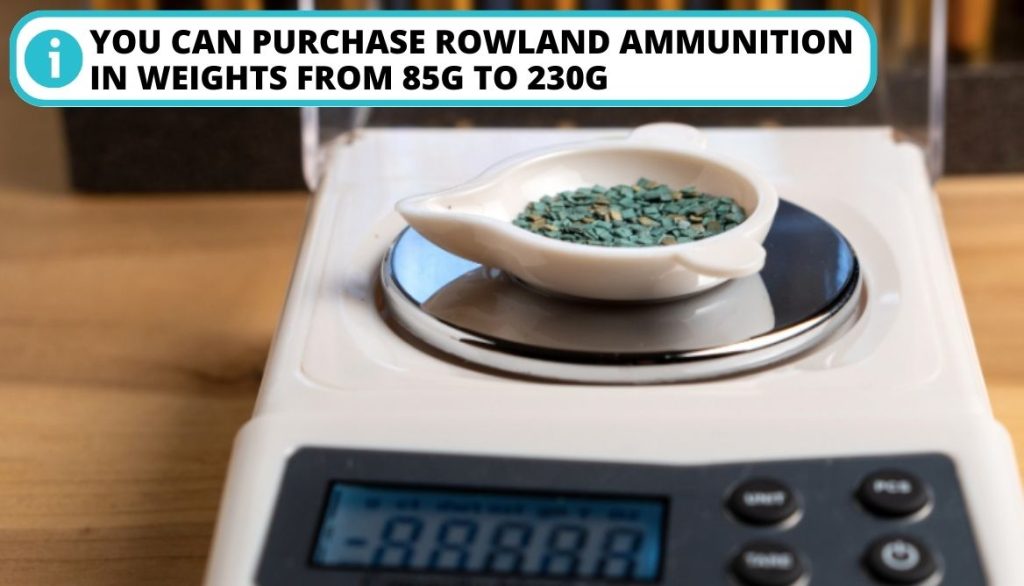
Winner: So, if bullet weight is your concern, then you should go with the 460 Rowland. This cartridge is going to provide you with significant power.
6. Ballistics
The 10mm showcases good ballistics. It offers good velocities and respectable bullet energy. While it may not match the sheer power of the 460 Rowland, the 10mm compensates with manageable recoil and versatility. Here are the ballistic tables:
10mm
Range (Yards) | Velocity (Ft/Sec) | Energy (Ft/Lbs) | Bullet Path (inches) | Wind Drift (inches) | Time of Flight (Seconds) |
0 | 1500 | 899.1 | -0.75 | 0.0 | 0.0000 |
50 | 1304.8 | 680.3 | -0.36 | 1.3 | 0.1074 |
100 | 1152.3 | 530.6 | -5.1 | 5.28 | 0.2300 |
150 | 1046.6 | 437.7 | -16.37 | 11.8 | 0.3670 |
200 | 972.6 | 378.0 | -35.56 | 20.41 | 0.5159 |
250 | 915.1 | 334.6 | -63.9 | 30.82 | 0.6751 |
300 | 867.0 | 300.4 | -102.68 | 42.88 | 0.8437 |
460 Rowland
Range (Yards) | Velocity (Ft/Sec) | Energy (Ft/Lbs) | Bullet Path (inches) | Wind Drift (inches) | Time of Flight (Seconds) |
0 | 1100.0 | 617.8 | -0.75 | 0 | 0.0000 |
50 | 1011.0 | 521.9 | -1.21 | 1.09 | 0.1426 |
100 | 945.5 | 456.5 | -10.17 | 4.13 | 0.1426 |
150 | 892.8 | 407.0 | -28.84 | 8.88 | 0.4596 |
200 | 847.7 | 366.9 | -58.41 | 15.25 | 0.6312 |
250 | 807.5 | 333.0 | -100.08 | 23.18 | 0.8135 |
300 | 770.8 | 303.4 | -155.09 | 32.67 | 1.0038 |
You can see from the table that 10mm has a much better velocity than the 460 Rowland over all the ranges. So, you get a more flat trajectory and thus there is a low bullet drop.
The Rowland has respectable velocity and higher energy at long range but there is no competition. The 10mm bullet travels faster and is able to reach the target quicker with less drop.

Winner: So, the 10mm is the obvious victor in this category with its much lower bullet drop.
7. Pricing
10mm emerges as the more budget-friendly option, outshining the 460 Rowland in this aspect. Not only is the ammunition itself cheaper, but it also enjoys a wider availability in both ready-made rounds and components for reloading. Thus, making it a more economical and practical choice for shooters.
- You can get the 460 Rowland from $70 to $90 per 50 rounds.
- The 10mm is available anywhere from $20 to $25 per 50 rounds.
The 460 Rowland boasts impressive ballistics. However, the added expense and time spent in procuring its ammunition make a compelling case for opting for the 10mm instead.
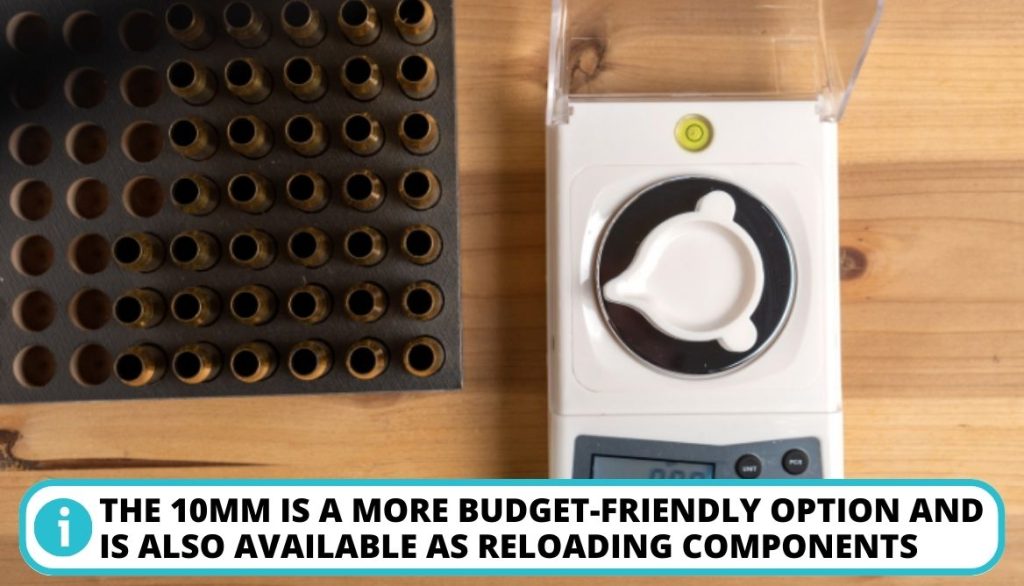
Winner: The cost-effectiveness and ease of obtaining 10mm ammo from local ammunition stores tip the scales in its favor.
The Final Verdict
After going through a detailed analysis of both cartridges, let’s settle the debate once and for all.
When to Consider 10mm
Here’s why you should opt for a 10mm:
- Versatility: The 10mm proves itself as a well-rounded cartridge suitable for various shooting disciplines, including self-defense, target shooting, and hunting.
- A Better and Flatter Trajectory: With its superior sectional density and ballistics, the 10mm exhibits a flatter trajectory. It enhances shooting precision at longer ranges. Your shot placement is more consistent.
- Reduced Recoil: The 10mm offers reduced recoil, providing better control and quicker follow-up shots for most shooters.
- Affordability: With its more affordable ammunition and reloading supplies, the 10mm proves to be a more economical choice in the long run.

When to Consider the 460 Rowland
Now, let’s check out the reasons behind choosing Rowland:
- Enhanced Power: If you prioritize maximum stopping power and penetration, the 460 Rowland is a better option.
- Better Customization: For those who enjoy customization, the 460 Rowland can convert existing .45 ACP handguns and offers greater versatility.
- Greater Ballistic Performance: If you want the best ballistic performance, then the 460 Rowland is a no-brainer.
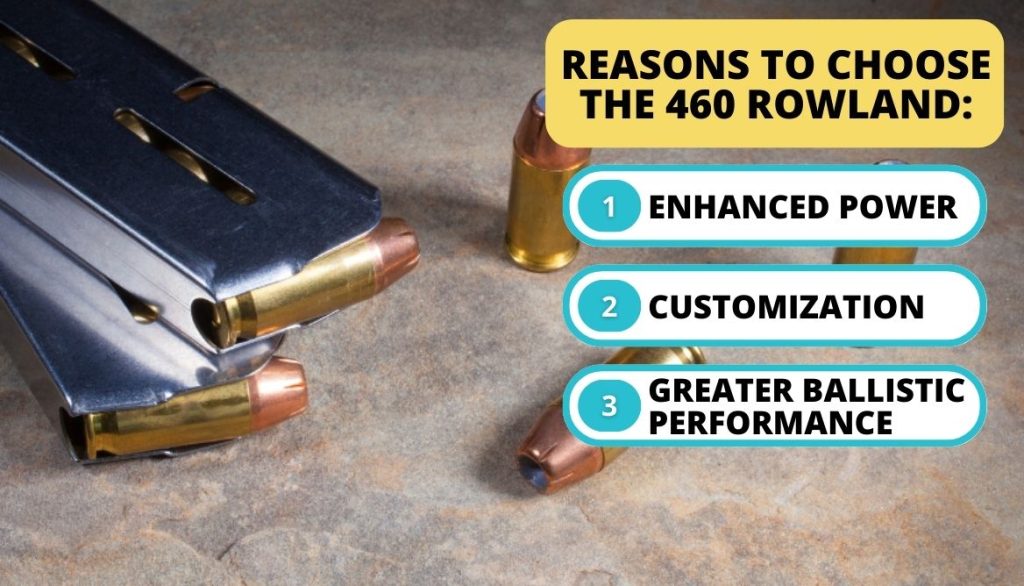
FAQ
Can 460 Rowland shoot 45?
Yes, the 460 Rowland can shoot .45 ACP ammunition. You have to use a conversion kit to make it compatible with .45 ACP handguns.
Is the 460 Rowland a good cartridge?
Yes, the 460 Rowland is considered a good cartridge. It is known for its superior ballistics, excellent penetration, and stopping power.
Which is better 10mm or 45 ACP?
The 10mm and 45 ACP have their own set of advantages. The 10mm offers higher velocity and energy compared to its counterpart. On the other hand, the .45 has a larger diameter which results in greater damage.
How good is the 460 Rowland with the FNX?
The FNX is a popular choice for converting to the 460 Rowland cartridge due to its strong build and reliability. With modifications and a compensator, it performs exceptionally well with the 460 Rowland ammo.
Conclusion
Summing it up, the 460 Rowland and the 10mm are both excellent cartridges that excel in certain areas. The 460 Rowland impressed me with its raw power, versatility,, and adaptability. I recommend it to those looking for maximum stopping power and customization options.
In contrast, the 10mm stands out for its smoother trajectory, controllable recoil, wider availability and cost-effectiveness. I think it is a practical and versatile option for different shooting needs.
The bottom line is that choosing between the two rounds depends on individual preference and the intended use. Which round did you like best? Share your favorite pick with me in the comments below!
